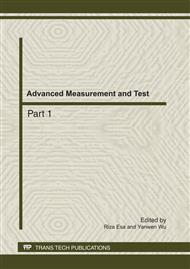[1]
A. Frendi, J.H. Robinson: On the effect of acoustic coupling on random and harmonic plate vibrations. NASA Technical Memorandum (1993).
Google Scholar
[2]
A.F. Seybert, T.W. Wu and W.L. Li: A coupled FEM/BEM for fluid-structure interaction using ritz vectors and eigenvectors. Trans. ASME, J. Vibr. Acoust. Vol. 115 (1993), pp.152-158.
DOI: 10.1115/1.2930325
Google Scholar
[3]
N. Vlahopoulos, C. Vallance and R.D. Stark: Numerical Approach for Computing Noise-induced Vibration from Launch Environments. Spacecraft and Rockets. Vol. 35 (1998), pp.355-360.
DOI: 10.2514/2.3334
Google Scholar
[4]
N. Vlahopoulos, S.T. Raveendra, C. Vallance and S. Messer: Numerical implementation and applications of a coupling algorithm for structural-acoustic models with unequal discretization and partially interfacing surfaces. Finite Elements in Analysis and Design. Vol. 32 (1999).
DOI: 10.1016/s0168-874x(99)00008-6
Google Scholar
[5]
M.J. Allen, N. Vlahopoulos: Integration of finite element and boundary element methods for calculating the radiated sound from a randomly excited structure. Computers and Structures. Vol. 77 (2000), pp.155-169.
DOI: 10.1016/s0045-7949(99)00208-4
Google Scholar
[6]
L. M. Lyamshev: A question in connection with the principle of reciprocity in acoustics. Soviet Physics Doklady. Vol. 4 (1959), p.405–409.
Google Scholar
[7]
A. N. Norris, D. A. Rebinsky: Acoustic reciprocity for fluid-structure problems. Acoustical Society of America. Vol. 94 (1993), pp.1714-1715.
DOI: 10.1121/1.408260
Google Scholar
[8]
K. Wyckaert, F. Augusztinovicz and P. Sas: Vibro-acoustical modal analysis: Reciprocity, model symmetry, and model validity. Acoustical Society of America. Vol. 100 (1996), pp.3172-3181.
DOI: 10.1121/1.417127
Google Scholar
[9]
F.J. Fahy: Some Applications of the Reciprocity Principle in Experimental Vibroacoustics. Acoustical Physics. Vol. 49 (2003), pp.217-229.
DOI: 10.1134/1.1560385
Google Scholar
[10]
Wang Jun, Ning Wei and Zhang Jinghui: Numerical Simulation of Reverberant Acoustic Field Based on Reciprocity Theorem. Journal of Xi'an Jiaotong University. Vol. 44 (2010), pp.110-114.
Google Scholar
[11]
L. Cremer, M. Heckl and B.A.T. Petersson, in: Structure-Borne Sound, Structural Vibrations and Sound Radiation at Audio Frequencies, pp.455-458, 3rd ed., Springer-Verlag, New York (2005).
DOI: 10.1007/3-540-26514-7_7
Google Scholar


